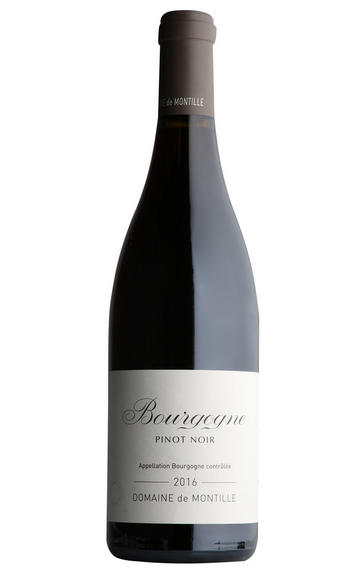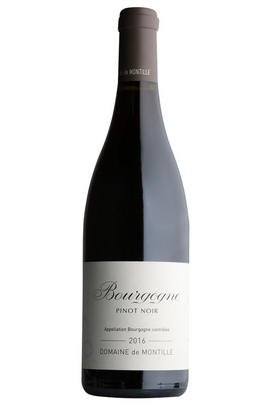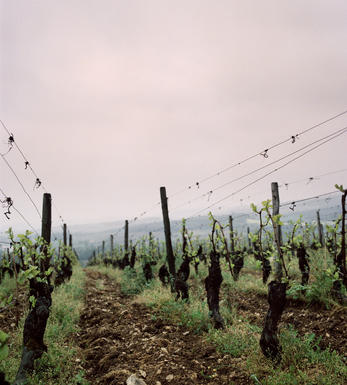
2015 Bourgogne Rouge, Domaine de Montille

About this WINE

Domaine de Montille
The De Montille family has long been a venerable one in Burgundy, though Domaine de Montille’s reputation was properly established in 1947: prominent Dijon lawyer Hubert de Montille inherited 2.5 hectares in Volnay, later adding further parcels in Volnay, Pommard and Puligny. Hubert’s style was famously austere: low alcohol, high tannin and sublime in maturity.
His son, Etienne, joined him from ’83 to ’89 before becoming the senior winemaker, taking sole charge from ’95. Etienne also managed Château de Puligny-Montrachet from ’01; he bought it, with investors, in ’12.
The two estates were separate until ’17, when the government decreed that any wine estate bearing an appellation name could no longer offer wine from outside that appellation.
The solution was to absorb the château estate into De Montille – the amalgamated portfolio is now one of the finest in the Côte d’Or.
Etienne converted the estate to organics in ‘95, and to biodynamics in 2005, making the house style more generous and open, focusing on the use of whole bunches for the reds.

Bourgogne Rouge
Bourgogne Rouge is the term used to apply to red wines from Burgundy that fall under the generic Bourgogne AOC, which can be produced by over 350 individual villages across the region. As with Bourgogne Blanc and Bourgogne Rosé, this is a very general appellation and thus is hard to pinpoint any specific characteristics of the wine as a whole, due to the huge variety of wines produced.
Around 4,600 acres of land across Burgundy are used to produce Bourgogne Rouge, which is around twice as much as is dedicated towards the production of generic whites.
Pinot Noir is the primary grape used in Bourgogne Rouge production, although Chardonnay, Pinot Blanc, Pinot Gris and in Yonne, César grapes are all also permitted to make up the rest of the wine. These wines tend to be focused and acidic, with the fruit less cloying than in some New World wines also made from Pinot Noir, and they develop more floral notes as they age.
Although an entry-level wine, some Bourgogne Rouges can be exquisite depending on the area and producer, and yet at a very affordable price.

Pinot Noir
Pinot Noir is probably the most frustrating, and at times infuriating, wine grape in the world. However when it is successful, it can produce some of the most sublime wines known to man. This thin-skinned grape which grows in small, tight bunches performs well on well-drained, deepish limestone based subsoils as are found on Burgundy's Côte d'Or.
Pinot Noir is more susceptible than other varieties to over cropping - concentration and varietal character disappear rapidly if yields are excessive and yields as little as 25hl/ha are the norm for some climats of the Côte d`Or.
Because of the thinness of the skins, Pinot Noir wines are lighter in colour, body and tannins. However the best wines have grip, complexity and an intensity of fruit seldom found in wine from other grapes. Young Pinot Noir can smell almost sweet, redolent with freshly crushed raspberries, cherries and redcurrants. When mature, the best wines develop a sensuous, silky mouth feel with the fruit flavours deepening and gamey "sous-bois" nuances emerging.
The best examples are still found in Burgundy, although Pinot Noir`s key role in Champagne should not be forgotten. It is grown throughout the world with notable success in the Carneros and Russian River Valley districts of California, and the Martinborough and Central Otago regions of New Zealand.


Buying options
Add to wishlist
Description
Gorgeous glowing purple, a bundle of fruit and full of joy, this is exactly what 2015 basic Bourgogne should be, only more so. One-third whole-bunch, there’s happy, vibrant red fruit, raspberry, then more concentrated, cherry-kernel fruit and structure at the back. The juicy aspect keeps on going. Fill your boots! Drink 2019-2025.
Jasper Morris MW, Wine Buyer
With prices in Burgundy still rising, even if often for understandable reasons, the appellations Bourgogne Blanc and Bourgogne Rouge are great places to look for affordable wines. You get the opportunity to drink wine from a top winemaker, from vines which are adjacent to the famous villages, and which will be accessible earlier. The 2005 Bourgognes Rouges are still delicious and youthful more than 10 years later, but most wines have been drinking well for a few years now.
wine at a glance
Delivery and quality guarantee